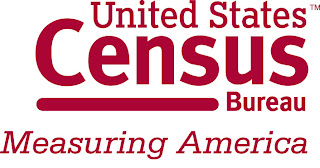Between 2007 and 2010, the poverty rate for school-age children showed a statistically significant increase in about 20 percent of counties across the United States, according to U.S. Census Bureau estimates for income and poverty in 2010 for every county and school district.
In all, 653 counties saw a significant increase in poverty for children ages 5 to 17 in families and eight counties saw a significant decrease over the period. A similar analysis of median household income showed 735 counties with a significant decrease over the 2007 to 2010 period and 78 counties with a significant increase.
The 2010 Small Area Income and Poverty Estimates (SAIPE) data are available for 3,142 counties and nearly 14,000 Title I-eligible school districts. The data represent the only current, single-year income and poverty estimates available for all sizes of counties and school districts. These estimates are released annually; however, 2007 was chosen for comparison because it was a pre-recessionary year.
The 2010 estimates also show that about one-third (1,011) of counties had school-age poverty rates significantly above the national poverty rate of 19.8 percent and 851 counties had rates significantly below. Among the 1,306 counties with total population less than 20,000, 73 counties were significantly above 30 percent poverty for school-age children in 2010. There were 48 counties above 30 percent in 2007.
“SAIPE also provides county and state estimates for the total number of people in poverty, the number of children under 5 in poverty (for states only), the number of children 5 to 17 in families in poverty, the number of children under 18 in poverty and median household income. School district estimates from SAIPE, produced for the Department of Education to implement provisions of the No Child Left Behind Act of 2001, are available for the total population, the number of children 5 to 17 and the number of children 5 to 17 in families in poverty.
“This release includes publication of the 2010 SAIPE Highlights Document, which presents SAIPE statistical trends and explains the sources and approach. Also available is an interactive mapping tool (http://www.census.gov/did/www/saipe/data/maps/index.html), allowing access to the county and school district statistics by selecting the geographic area for display, as well as thematic maps for all concepts available from SAIPE 2010 and 2009. More information can be obtained from the SAIPE main page.
SAIPE combines the latest American Community Survey data with aggregate data from federal tax information, administrative records on Supplemental Nutrition Assistance Program participation, 2000 and 2010 Census statistics and annual population estimates.
These statistics, sponsored by the U.S. Department of Education, are used as one of the criteria to allocate federal funds to local educational agencies. In addition, state and local programs use these statistics for distributing funds and managing school programs.







